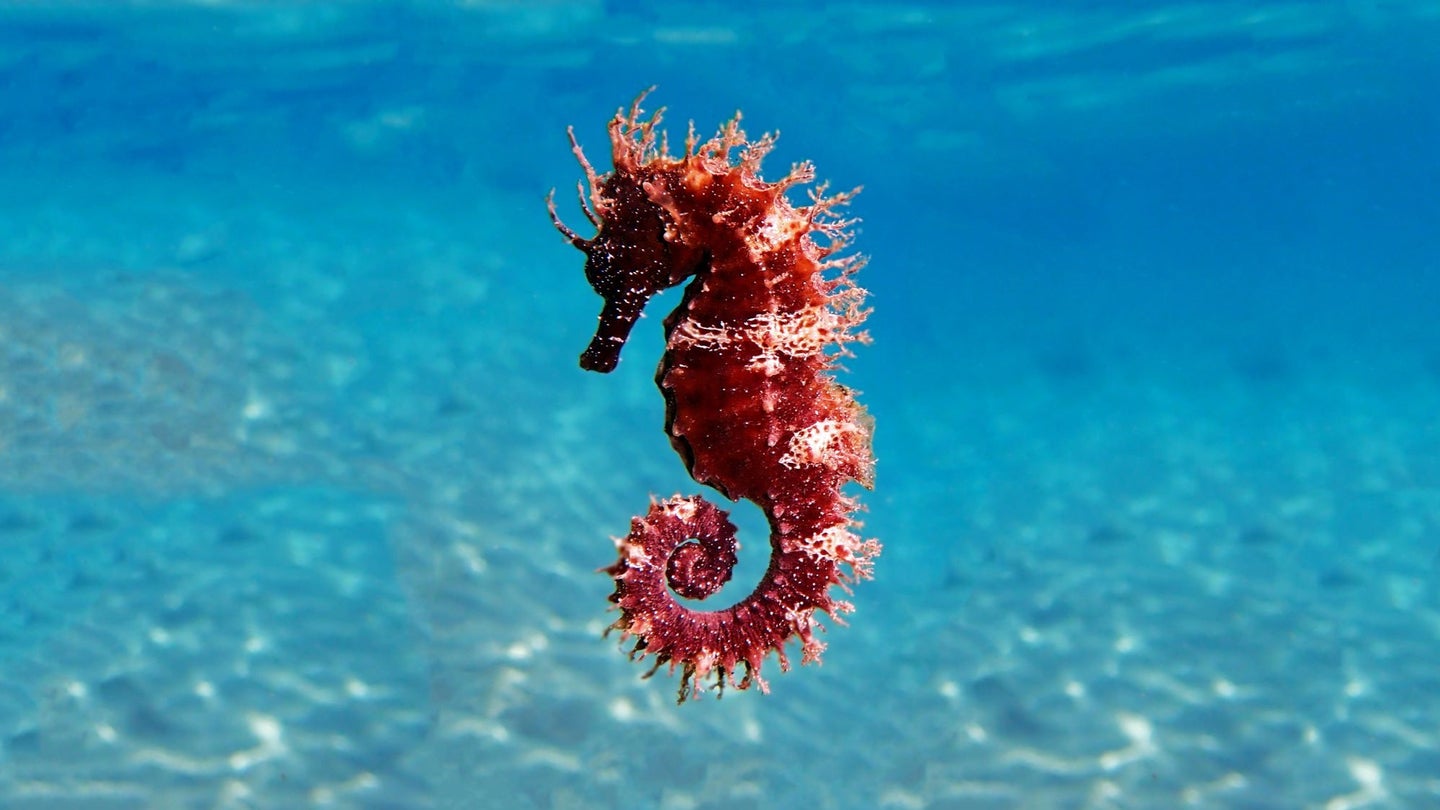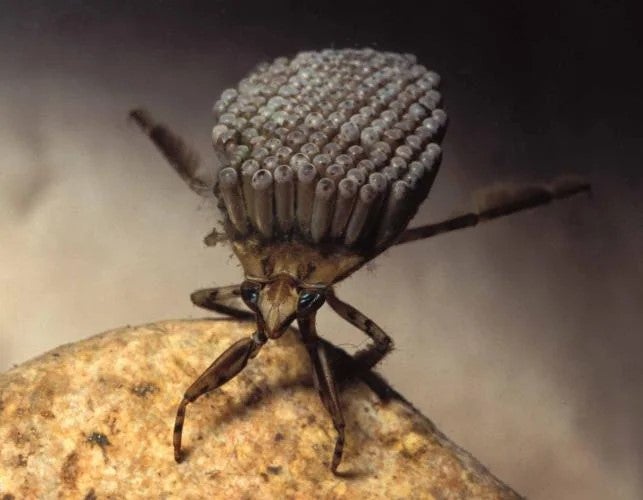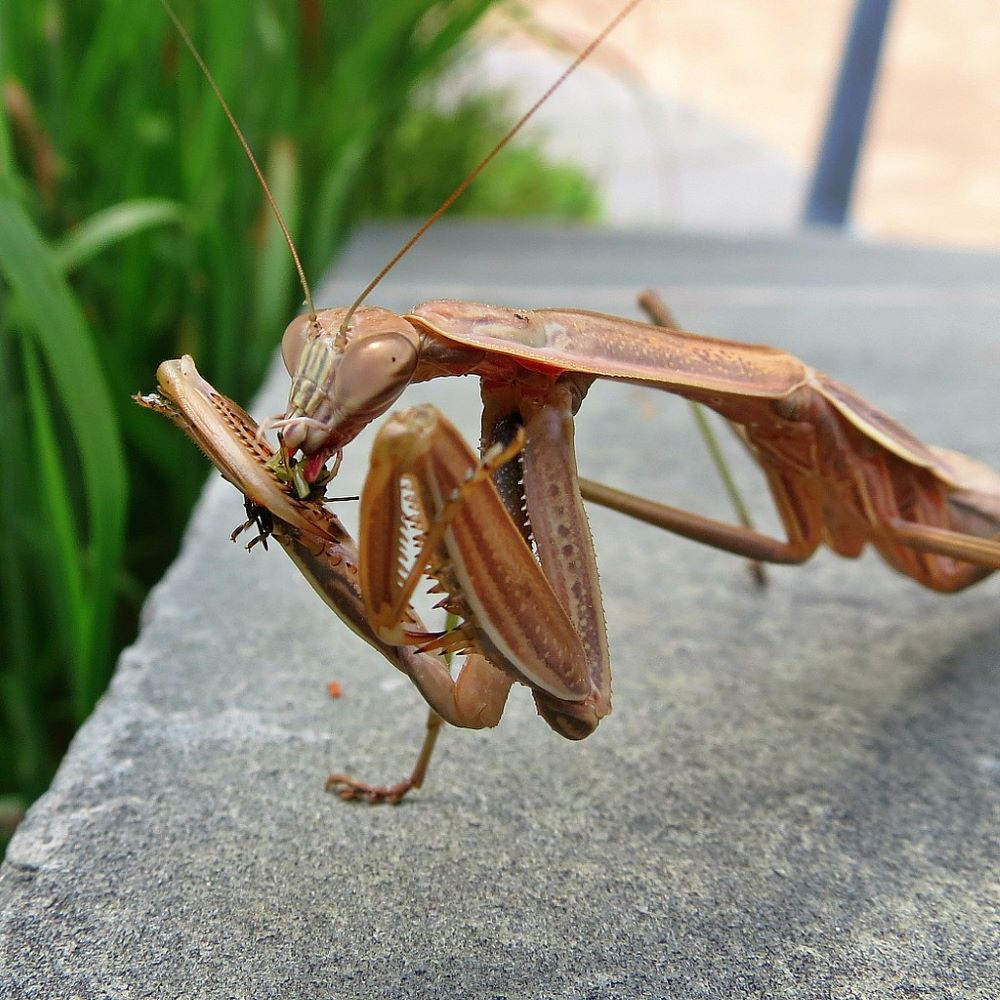
Across all creatures that invest in childcare, it’s much more common for mothers, not fathers, to bear the responsibility of parenthood. But, as is often the case in the animal kingdom, there are exceptions. These animal dads, who all represent egg-laying species, help out by either incubating, protecting, or otherwise shepherding offspring out of a shell and into the wide-open world.
Seahorses
The seahorse might be the classic example of animal fathers that defy conventions. These male fish have skin pouches in their midsections where they fertilize and incubate eggs that are dropped off by the females. When seahorse fathers get pregnant, it’s a complex ordeal: As a 2015 study found, the reproductive process involves more than 3,000 genes, which determine the dads provide for their young before they swim away. For example, inside that pouch, the developing seahorses receive calcium and other nutrients to build up their skeletons.
Giant water bugs

Giant water bugs, sometimes called “toe-biters” thanks to their painful nips, are predatory insects that grow up to three inches long. Although they have a fearsome appearance—another nickname is “alligator tick”—males prove to be protective fathers. After mating, a female water bug lays 100 or more eggs in a clump on the male’s back. He will guard these for about a week or two until the nymphs, which look like mini adults, hatch.
[Related: A dinosaur egg bonanza is helping ecologists understand prehistoric parenting]
Mouthbrooding fish
For some fishes, the safest place for freshly laid eggs is in dad’s mouth. This behavior, called mouthbrooding, has evolved independently across millenia in at least seven families of fish; depending on the species, the egg-holder might be mother or father, who will keep fertilized eggs tucked safely behind their jaws. But the strategy can also be exploited. The cuckoo catfish, found in Lake Tanganyika, the world’s longest freshwater lake located in Sub-Saharan Africa, sneaks its own eggs into clutches laid by cichlid fish. When the cichlid parent gathers up all the eggs in its mouth, it might wind up unwillingly protecting catfish children, too.
Smooth guardian frogs
During mating season on the leafy floors of Bornean forests, male smooth guardian frogs call out to females, who lay 15 to 20 eggs before scampering off. The males watch over the brood for about two weeks. When the eggs hatch, “the tadpoles scramble on the back of the male,” said ecologist Johana Goyes Vallejos, then a postdoctoral research associate at the University of Kansas, in a 2018 press release. They’ll ride on dad until he can pick a safe spot: “The male takes them throughout the forest to find small pools to be deposited where they can finish their development.”
[Related: Spy tech and rigged eggs help scientists study the secret lives of animals]
Greater rheas
When it comes to South America’s largest birds, incubation is for the dudes. Researchers have observed males of the flightless species attending to a clutch of eggs for up to six weeks. The dads then cared for the newborn chicks for another six months. Other father birds that incubate eggs include Antarctica’s emperor penguins. Males will keep a single egg warm snug in their brood pouch for up to 67 days—a record among penguin species— while the females return to the seas to hunt fish.
Praying mantises

As a dramatic final act, some male praying mantises willingly become food for their mates. While that might seem like a rough deal for dad—he won’t be around to tend mantis eggs or see his young grow up—getting devoured could benefit the long-term survival of the insect offspring. Cannibalistic female mantises produce more eggs than mantises who don’t eat their mates, a 2016 research paper concluded. The mothers also get plenty of amino acids, the building blocks of proteins, from snacking on their partners.
Bald eagles
If you’re a bald eagle, parental hormones can be a powerful calling: Mated pairs typically split the caretaking duties for their eggs. But Murphy, a captive male eagle at a Missouri bird sanctuary, was so overcome with these chemicals, he built and defended a nest for a rock. When an orphaned eaglet needed a parent, Murphy’s caretakers swapped out the stone for the chick. After a week of cautious introduction, Murphy became a surrogate father for the young bird, who will be under the older eagle’s wing until a planned release this summer.
The post These animal dads carry eggs on their backs, under their skin, or in their mouths appeared first on Popular Science.
Articles may contain affiliate links which enable us to share in the revenue of any purchases made.
from | Popular Science https://ift.tt/V2MxKFL




0 Comments